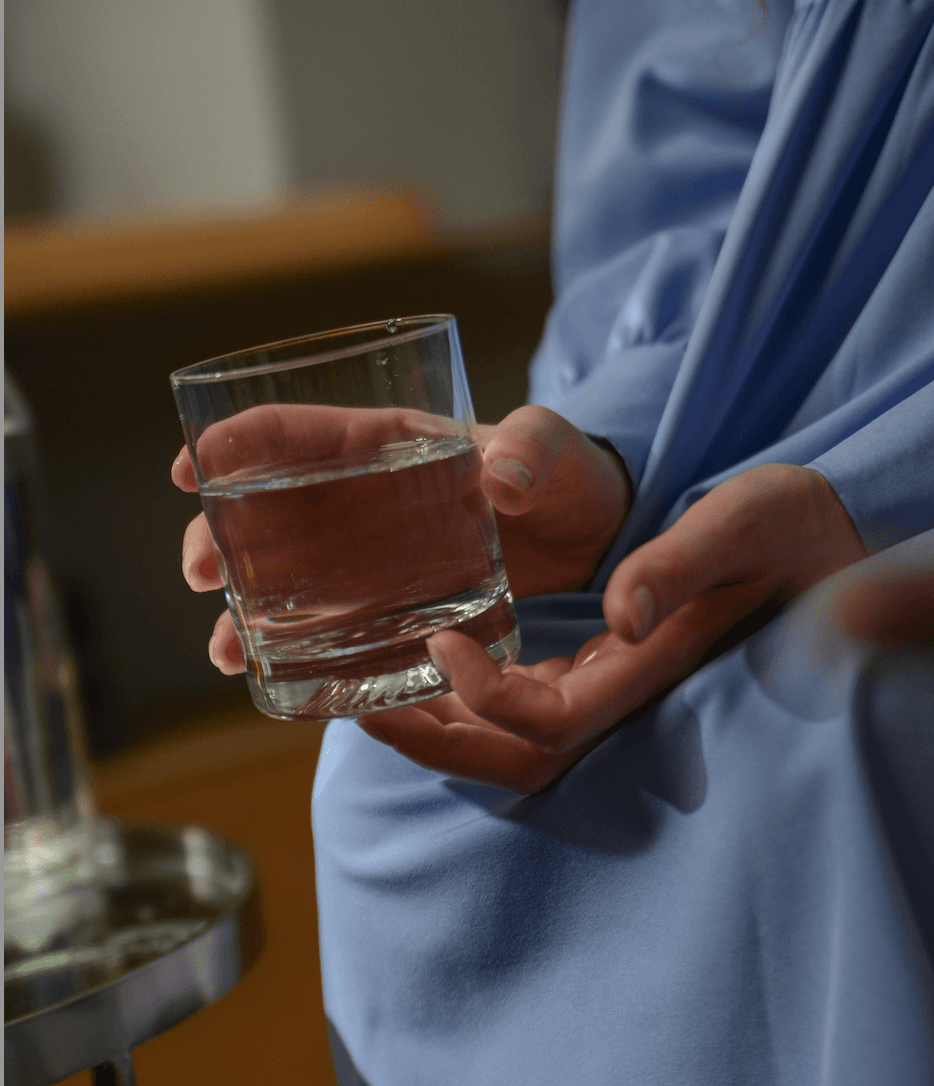Millions of Americans drink water from public systems with lead-based water lines. And when that lead sneaks into our water, it can cause irreversible brain damage, reproductive issues, high blood pressure, and more. To this day, potentially dangerous levels of lead are legally allowed in our tap water supplies across all 50 states. So read on to discover the right (and wrong) ways to protect yourself and your loved ones from lead-contaminated water.
how is lead removed from drinking water?
Share This Article:

Lead Enters Tap Water When Plumbing Materials Corrode & Water Pipes Deteriorate
Lead typically sneaks into your home water supply through corrosion, or aging, of lead service lines as well as plumbing fixtures, pipes, and faucets made with lead or fused together with lead solder. In fact, the U.S. EPA (Environmental Protection Agency) admits approximately 9.2 million lead pipes supply drinking water to schools, homes, offices, and more throughout the U.S.
While newer faucets and plumbing systems contain far less lead than they used to, most faucets and fixtures installed before 1997 may still contain higher levels of lead because they were manufactured before stricter regulations were put in place.
Lead Poisoning Can Cause Brain Damage, Kidney Damage, Reproductive Issues, & More
According to the Mayo Clinic, lead exposure can be linked to a variety of frightening public health risks, including:
-
Neurological & Developmental Effects: Lead exposure is known to have adverse effects on the developing nervous system, particularly in young children. It can impair cognitive function and impact learning abilities, attention span, and intellectual development.
-
Growth & Developmental Delays: Children exposed to lead may experience delays in growth and physical development, including slower weight gain and stunted height.
-
Kidney & Blood Disorders: Lead can accumulate in the kidneys, leading to kidney damage and impaired kidney function. It has also been linked to anemia.
-
Cardiovascular Effects: High lead exposure has been associated with an increased risk of hypertension (high blood pressure) and cardiovascular disease in adults.
-
Reproductive Health Issues: Lead contamination can affect reproductive health, leading to fertility problems and complications during pregnancy. Pregnant women can even transfer the toxic heavy metal to the developing fetus.
-
Other Health Effects: Lead toxicity can also contribute to digestive problems, behavioral problems, irritability, fatigue, headaches, and more.
As you can see, young children and pregnant women are particularly vulnerable to several of these health effects of lead. And many of these issues can occur, even with minimal lead exposure.
Lead Is Legally Allowed In Drinking Water Systems In All 50 States
The U.S. EPA sets national standards for drinking water quality per the Safe Drinking Water Act. At time of publication, the EPA’s maximum contaminant level (MCL) for lead is 15 parts per billion (ppb).
In other words, up to 15 ppb of lead is legally allowed in U.S. tap water supplies / public water systems, without repercussion. Therefore, water treatment doesn’t guarantee complete protection, nor clean water.
Meanwhile, The Centers for Disease Control and Prevention (CDC), and many other public health experts state that there is no safe level of lead in drinking water. Said differently, any exposure to lead via drinking water can be dangerous.
How To Protect Yourself From Lead In Your Drinking Water

Let’s take a look at the best (and worst) treatment methods to protect your home water supply, or water source, from lead.
Typical Carbon Water Filters Are Rarely Certified To Remove Lead From Water
Some-not all-activated carbon filters can target lead in water. However, their effectiveness depends on a number of factors, including the type of carbon, the size of the carbon particles, the pH of the water, the amount of lead in the water, and the age of the filter.
That’s why many store-bought water filters do not claim to remove lead from water and do not have NSF certification or lab results that show significant lead reduction.
Like Carbon Filters, Ceramic Filtration Systems Are Hit Or Miss
Ceramic filters have micro-pores that can block contaminants, including lead. However, their effectiveness at removing lead may vary depending on factors such as the pore size, the flow rate of water through the filter, and the initial lead concentration in the water.
Said differently, you have to do your research to confirm you’re protected. And in most cases, ceramic technology alone cannot completely protect you from high levels of lead.
Reverse Osmosis Systems Have Major Drawbacks
While Reverse Osmosis (RO) technology can remove lead from water, there are several downsides to this technology:
-
RO systems remove healthy minerals like calcium, magnesium, and potassium from your water.
-
RO systems can waste up to 75% of the water they filter.
-
RO-filtered water has been described as “dead,” “tasteless,” and “flat.”
Distillation Has As Many Drawbacks As RO
Distillation systems can reduce lead in water, but they probably aren’t your best option. Here’s why:
-
They are slow. A conventional table-top distiller can force you to wait up to 6 hours for a single gallon of distilled water.
-
They strip water of healthy minerals. Just like R.O. systems, they can produce “tasteless,” “dead,” and “flat” water.
-
They can be pricey. The energy necessary for heating water and operating distillation equipment can skyrocket your electricity bills and impact the environment.
-
Proper storage is a pain. You have to keep distilled water in sealed containers in cool, dark locations, to prevent re-contamination.
Ion Exchange Systems Prioritize Water Softness, Not Safety
Ion exchange technology, which is primarily used in water softeners, is designed to exchange “hard” ions (like magnesium and calcium) for “soft” ions (such as sodium) to soften water. Even though some ion exchange systems can be used for lead removal, they tend to leave you vulnerable to dozens of other common dangers.
UV (Ultraviolet) Disinfection Won’t Protect You From Lead, Either
UV filters can kill bacteria and viruses in water, but they do not target lead and other common heavy metals regularly found in tap water.
Boiling Water Can Make Matters Worse
Boiling water does not remove lead from tap water. In fact, boiling water can actually increase lead concentration because lead is more soluble in hot water than in cold water.
Bottled Water Is Just As Dangerous As Tap Water
The FDA allows the same amount of lead in bottled water as the EPA does in tap water. In other words, even bottled water can have dangerous levels of lead.
Clearly Filtered’s Affinity Filtration Technology Targets Lead, As Well As Hundreds Of Other Contaminants Other Filters Can’t
Powered by 7 unique filtration medias, our advanced Affinity Filtration Technology protects you from up to 365+ harmful tap water contaminants, including lead, without targeting healthy minerals.
There’s nothing else out there that ensures your water is this clean, safe, and healthy, so you can trust every drop.
Get Proven Protection With Clearly Filtered
If you want proven protection from lead and hundreds of other common dangers, upgrade to Clearly Filtered today to get easy access to clean, safe drinking water.
References
1. Lead poisoning https://www.mayoclinic.org/diseases-conditions/lead-poisoning/symptoms-causes/syc-20354717
2. Does boiling water remove lead? https://www.epa.gov/lead/does-boiling-water-remove-lead



